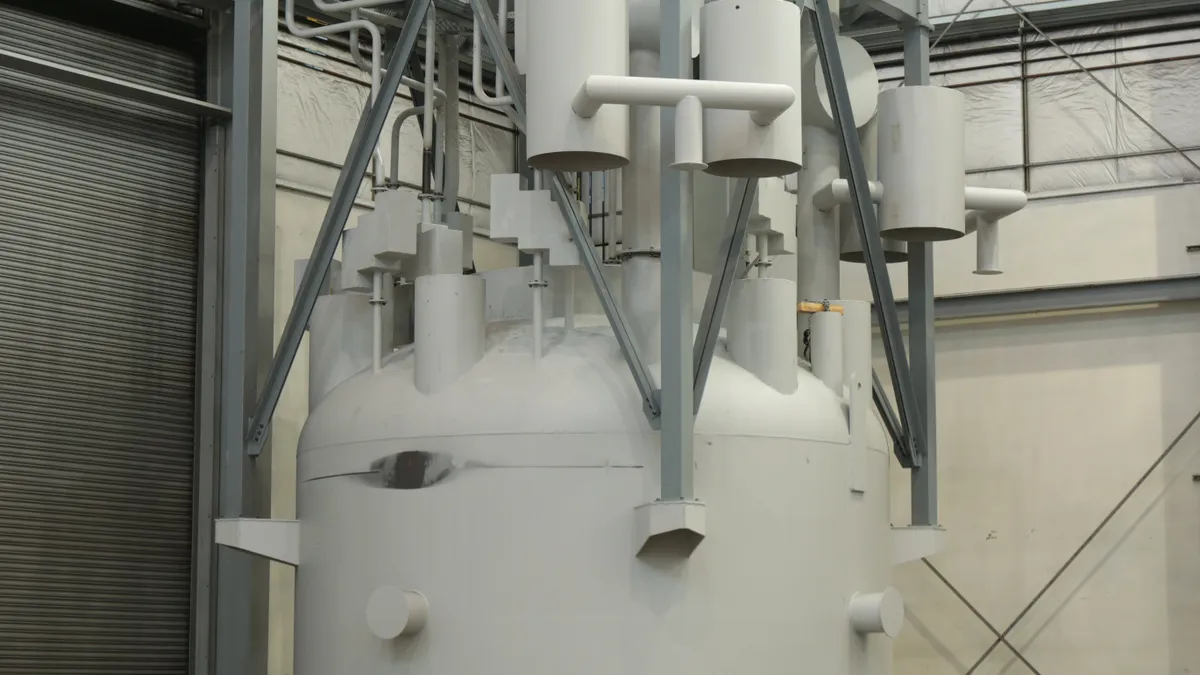Dive Brief:
-
The Department of Energy on Monday said it plans to invest $115 million to move the United States forward on developing the next generation of advanced nuclear reactors.
-
The DOE said it plans to contract with American Centrifuge Operating, a subsidiary of Centrus Energy, for a project in Piketon, Ohio, to demonstrate the production of high assay low enriched uranium (HALEU) to support DOE research and development activities and programs.
- Several advanced nuclear reactors that are in the early stages of development would require HALEU fuel, which is enriched to a 5% to 20% uranium-235 content, compared with the 3% to 5% U-235 used in existing commercial reactors.
Dive Insight:
DOE officials are concerned that with only one conventional, commercial nuclear reactor under construction, the U.S. could lose its edge in nuclear technology. Several new technologies are under development by industry, but most of them would require fuel that contains higher energy levels in the form of higher concentrations of U-235, such as HALEU.
Currently, no U.S. facilities are capable of producing HALEU at commercial scale.
The advanced nuclear technology that is furthest along is a design for a small modular reactor, and NuScale Power appears to be closest to having its design deployed commercially.
NuScale is working with the Utah Associated Municipal Power Systems on a 720 MW project in Idaho that would feature 12 60-MW reactors that could come online as soon as 2023. NuScale's reactors, however, would use conventional nuclear fuel.
There are at least eight other companies pursuing advanced technology designs for even smaller reactors, so-called micro reactors, that would be roughly 50 MW or smaller. Most of those designs call for HALEU fuel.
Several of those companies are in pre-application discussions with the Nuclear Regulatory Commission, but none has yet applied to the NRC for a license. According to the Nuclear Energy Institute (NEI), a micro reactor could possibly come online in the 2025-2027 time frame. The DOE wants the Piketon facility to be able to produce HALEU by October 2020.
"From an industry perspective, it is very important to have a source of high assay HALEU fuel," Everett Redmond II, senior technical advisor at NEI, told Utility Dive. "We don't want reactors designed that need a fuel we don't have," he said.
One of the drivers in the efforts to produce U.S. HALEU and to move micro reactors forward is the Department of Defense's stated desire to install micro reactors at domestic DoD sites by the end of 2027.
To meet the DoD's needs, those reactors and the fuel they use would need to be "unencumbered" by materials, processes and technology that comes from outside the U.S., Redmond said.
Micro reactors are being designed that are capable of islanding themselves from — and operating without support of — the surrounding grid, as well as starting without external power sources. One of the advantages of using HALEU fuel is that its higher energy concentration allows for refueling cycles as long as 10 years.
The NEI's roadmap for the deployment of micro reactors identified Eielson Air Force Base in Alaska as a reference for the first deployment of a micro reactor for a DoD installation.
The existing commercial nuclear fleet uses conventional U-235 fuel, but some companies have begun preliminary discussions about using a more enriched fuel of up to 8% as a way of extending the operating cycle of their reactors, Redmond said.














